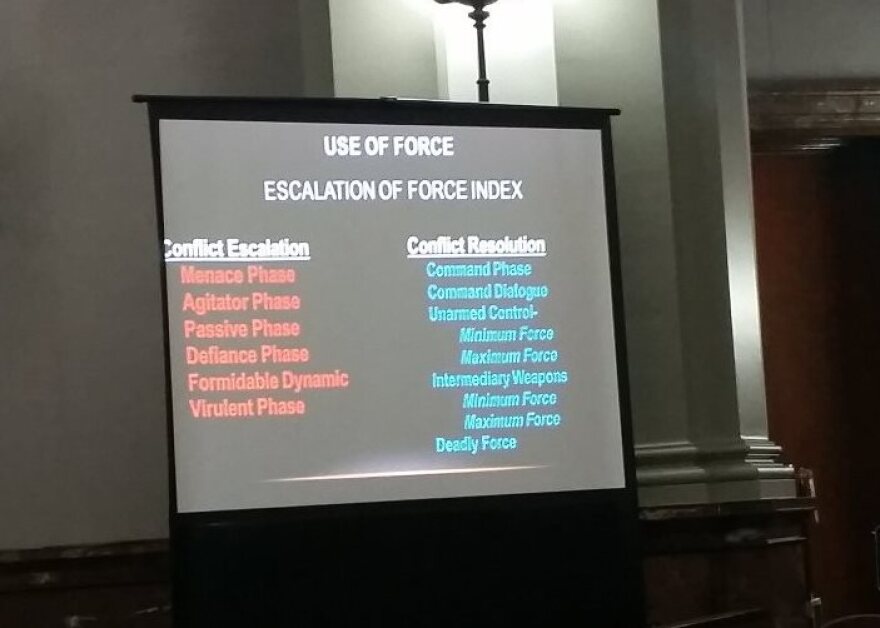Nearly six months after he first asked for the authority to do so, Alderman Antonio French has started his review of the St. Louis Metropolitan Police Department’s use-of-force policies.
French's subcommittee on police use of force held its first meeting Thursday. He had originally hoped for a special committee that would study officer-involved shootings, but the legislation authorizing that committee never passed. A subcommittee can be created without a vote of the Board of Aldermen.
"I think the subcommittee actually works better for what we're trying to get at," French said. "The subcommittee is empowered to do everything that we think would be necessary. And the end result of these hearings hopefully will be recommendations to the full board on possible policy changes, or even recommendations for changes in structure in how policy is written."
Chief Sam Dotson told the committee he welcomed the discussion about police use of force.
“I think that it’s always been an important conversation, but I think in the world that we live in post-Ferguson, we can’t have enough conversation about it," he said.
French intended the first meeting to be informational, giving Dotson the chance to outline the department's policy and how officers are taught the policy. Here is the Cliffs Notes version:
- Use of force does not just refer to police shootings. It describes the entire continuum of how an officer responds to a situation.
- Use-of-force policies across the country are governed by two main U.S. Supreme Court cases -- Tennessee vs. Garner, from 1985, and Graham vs. Connor, from 1989. Dotson said the SLMPD policy is much stricter than those cases say a use-of-force policy should be.
"It is the policy of the department that a reverence for human life will guide officers in the use of deadly force," the policy reads. "Deadly force will only be used when necessary to protect the lives of the officers or other persons. It is never justified solely to protect property."
- Changes to the policy are made internally and distributed to officers electronically. They must acknowledge they have received the document and must answer questions on the policy monthly.
- The latest change, made in July 2015, lays out a clear policy for when chemical agents like CS gas can be used for crowd dispersal. The development of such a policy was required by a settlement to a federal court case.
- SLMPD recruits get approximately 330 hours of training in areas like defensive tactics, firearms, use-of-force scenarios and legal studies. Officer Phil Green, a trainer at the academy, said he and other instructors make sure the curriculum ties together seamlessly, so what they learn about the law jives with what they are taught about the use of force.
- Escalation and use of force run on a continuum. Green said the goal for officers is to use the least amount of force necessary to prevent a situation from escalating even further. They are authorized to use force "one step up" from where the person they are encountering is.

- Dotson said the entire department will go through further de-escalation and implicit bias training. "I want to give my officers all the tools they need to stay on the low end of the scale," he said.





